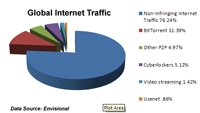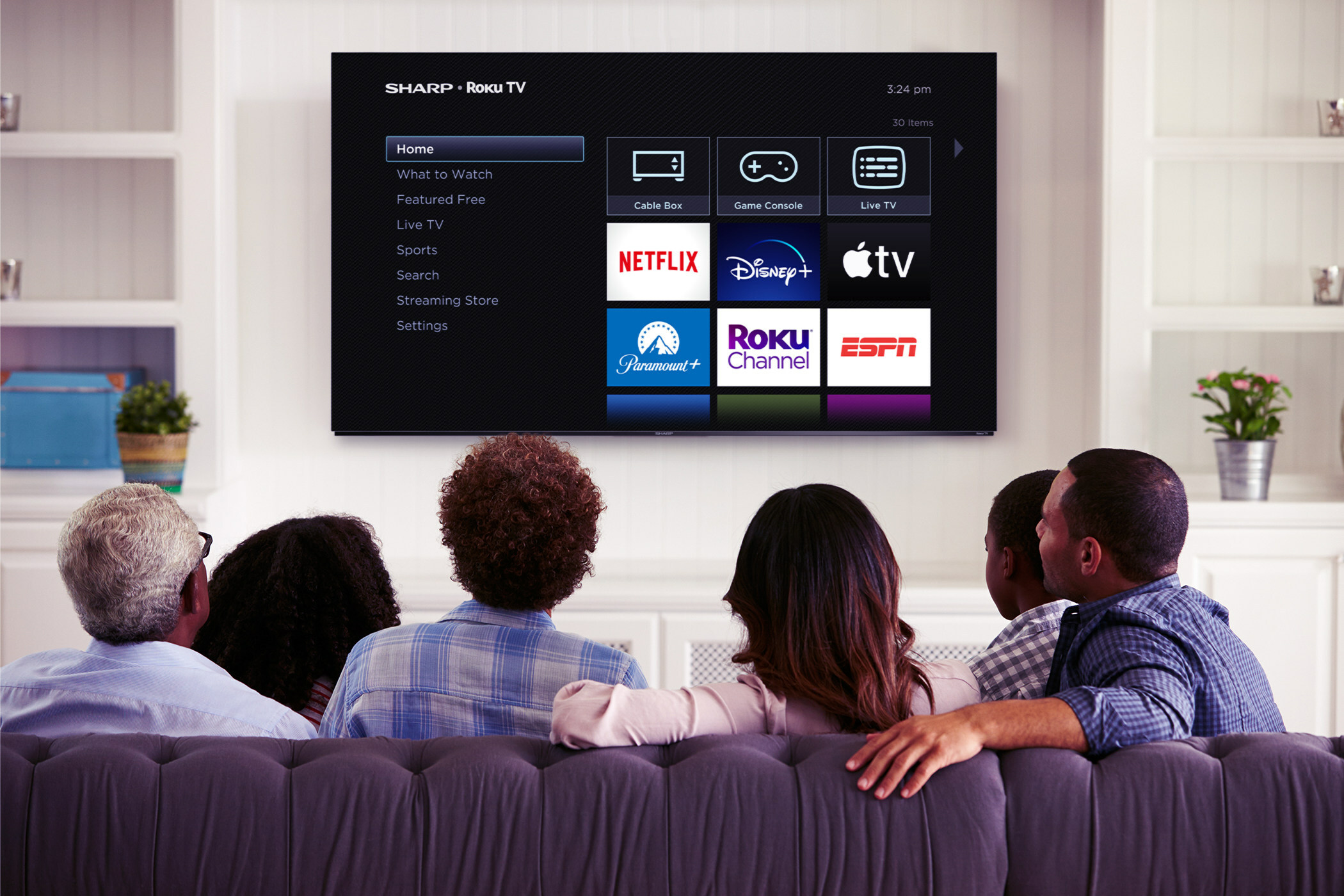One-quarter of global Internet traffic involves piracy, new study says

Nearly one-quarter of Internet traffic worldwide (23.8 percent) and more than 17 percent in the United States involves the theft of digital assets, according to a new study released Jan. 31 by brand and trademark monitoring firm Envisional.
Commissioned by NBCUniversal, the study reveals that worldwide BitTorrent file sharing accounted for half of the illegal traffic, and in the United States, BitTorrent file sharing was responsible for more than half of the total, or 9 percent, of digital asset theft.
“Whether you call it piracy, digital theft, illegal downloading or unauthorized streaming, it��s stealing the creative work of others,” says Bob Pisano, president and Interim CEO of the Motion Picture Association of America, in a press release announcing the study. “The real victims are the 2.4 million Americans working in film and television and the millions of other workers in the United States and abroad whose livelihoods depend on the creation, sale and distribution of copyrighted material.”
The findings shed light on the sources of pirated content. While BitTorrent file sharing stood out as the largest source of infringing traffic, there are other notable sources, including cyberlocker traffic, which is responsible for 5.1 percent, and video streaming sites, which make up 1.4 percent of the total. Other peer-to-peer networks and file-sharing arenas like Usenet accounted for the rest of infringing traffic globally.
The analysis focused on PublicBT tracker, one of the largest and most popular BitTorrent trackers worldwide, which holds information on more than 2.7 million individual torrents.
An analysis of the top 10,000 swarms (as measured by number of active downloaders) found that pornography (35.8 percent), film (35.2 percent) and TV (12.7 percent) were the most popular content types. Excluding pornography, only one swarm in the top 10,000 offered legitimate content, and 99.24 percent of all material in the top 10,000 swarms was copyrighted. Including pornography, 63.68 percent of all content was copyrighted. Envisional identified the content of all but 48 of the top 10,000 swarms and found that 85.5 percent was video content of some kind, while software was 4.2 percent and computer games made up 6.7 percent.
David Price, head of piracy intelligence for Envisional, authored the 56-page study.
Get the TV Tech Newsletter
The professional video industry's #1 source for news, trends and product and tech information. Sign up below.
Phil Kurz is a contributing editor to TV Tech. He has written about TV and video technology for more than 30 years and served as editor of three leading industry magazines. He earned a Bachelor of Journalism and a Master’s Degree in Journalism from the University of Missouri-Columbia School of Journalism.

